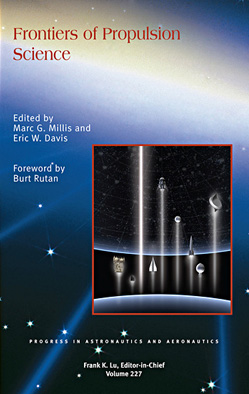Propulsion Ideas
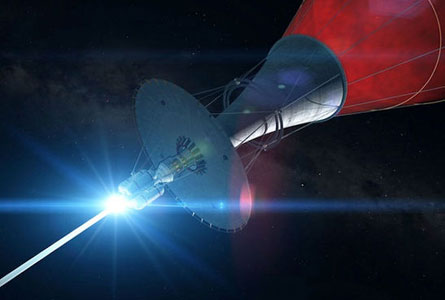
“We look for things. Things that make us go.”
~ Pakled Captain, Grebnedlog
Star Trek – The Next Generation, Episode “Samaritan Snare”
Human Survival Emphasis
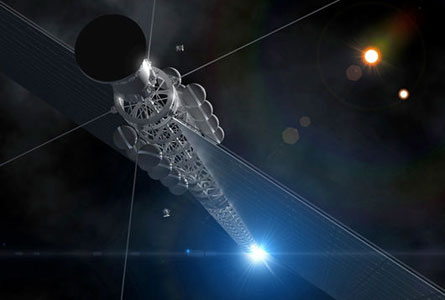
Technology Based on Accrued Physics
All of the ideas in this category are possible, in principle. They do not violate any laws of physics. However, when digging into the details, sometimes there is some critically required material that cannot exist (unobtanium or its derivative unobtanium-dioxide) or some component whose operation does indeed violate physics (e.g. perfect heat rejection or superconductors with no current limit). Because of the complexity and incomplete work behind these concepts, it is difficult to determine how viable each method might be. The relative merit of each of these ideas will also vary depending on the chosen mission and vehicle requirements. Some methods will be better for some missions than for others. The main point is that there is no definitive ‘best’ idea at this time. Regardless of not being able to predict which idea is best, the further pursuit of each idea will likely produce valuable insights. The tactic of Tau Zero is to determine the weakest link in each of these concepts as the way to identify the next-step priorities for each.
- Sails
- Solar
- Laser
- Maser
- Magnetic
- Antimatter ablated (hBar)
- Rockets requiring onboard propellant
- Chemical
- Electric
- Electrostatic
- Electromagnetic
- Nuclear
- External Nuclear pulse (Orion)
- Nuclear Fission
- Nuclear Fusion (Daedalus/ Icarus)
- Antimatter Catalyzed Fusion (AIM Star)
- Antimatter-Matter
- Rockets without onboard propellant
- Bussard interstellar (fusion) ramjet
- Bussard Buzz-Bomb [J. Kare]
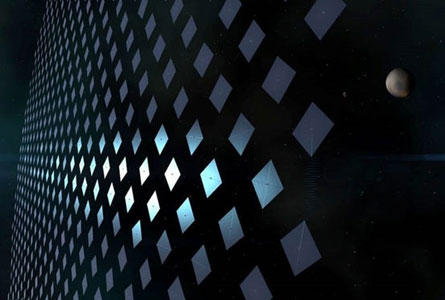
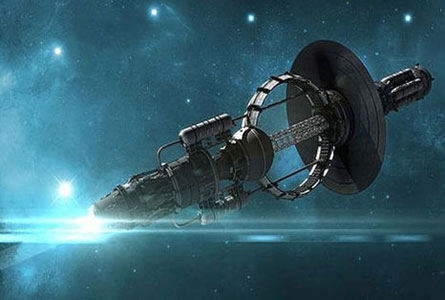
Goals that Require Physics Advancements
This category covers those notions, which if achieved, would pave the way for ideal starflight, being able to go farther, faster, and more efficiently. In short, this category entertains the possibility that the fictional visions of Star Trek and Star Wars might be achieved in the future. The weak-link in all of these ideas is that the physical principles from which to engineer the devices have not been discovered and might turn out to be impossible. The tactic of Tau Zero is to identify the next-step questions with each of these, so that progress toward solving those unknowns can commence. This even includes work that can indisputably show that certain ideas are not viable – which IS progress. Thus, most of the work to investigate these notions will be physics research instead of engineering. A comprehensive assessment of the status and next-steps of such ambitions has been published as a graduate-level scholarly text:
Millis, M. G. & Davis Eric (2009) Frontiers of Propulsion Science. Vol 227 of Progress in Astronautics and Aeronautics, American Institute of Aeronautics and Astronautics (AIAA).
- Non-propellant Space Drives, by approach discipline:
- Idea Zombies – Bad ideas that won’t stay in their graves – and Common Misinterpretations to Avoid
- Coupling of Fundamental Forces
- Inertial Frame Kinematics
- Tachyon Rocket [J. Cramer]
- Quantum Physics
- General Relativity using Riemannian Geometry
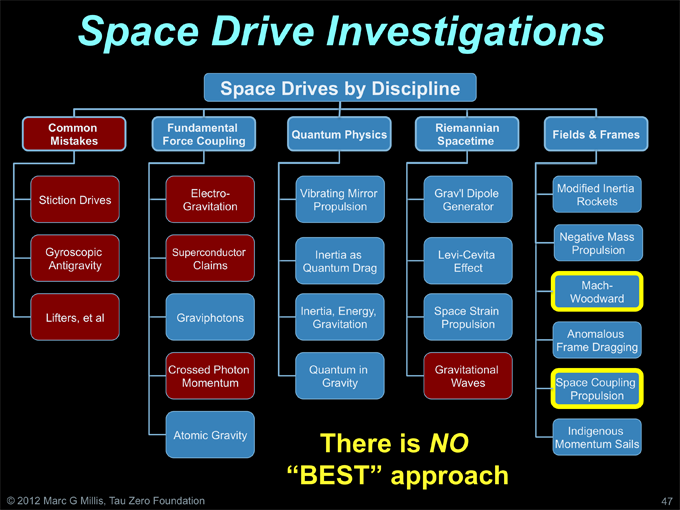
- Faster-Than-Light Flight
- Brute Fast (Analogous to Cerenkov radiation)
- Tachyonic conversions
- Quantum Nonlocality
- Entangled & Teleported States
- Tunneling
- Infinite Improbability Drive (fiction)
- Translocation (fiction)
- Hyperlightspeed Hypomatter (Analogous to how Light breaks the sound barrier)
- Hyperspace (fictional version of that term)
- Spacetime Engineering with General Relativity using Riemannian Geometry
- Traversable Wormholes
- Warp Drives
- Alcubierre, Warp Drive (Expansion/Contraction)
- Van Den Brock, Thin wall Alcubierre
- Krasnikov, Warp Tunnel
- Natario, Slipping
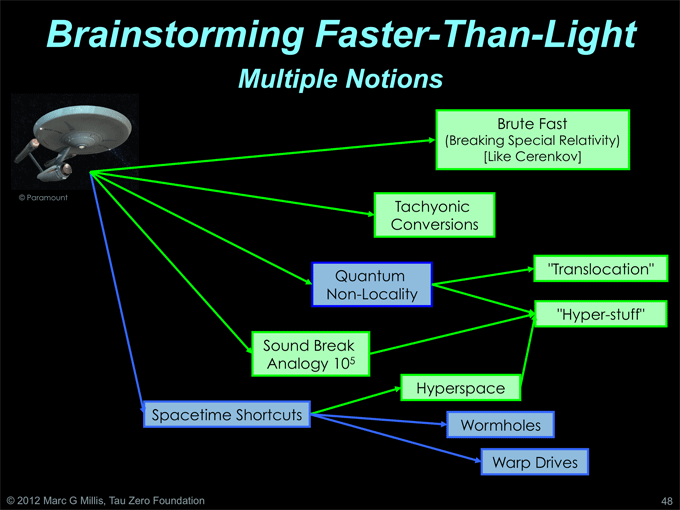
Alcubierre Warp Drive
Description pending
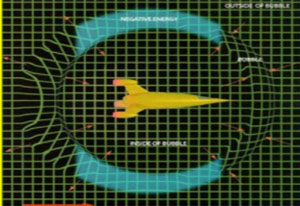
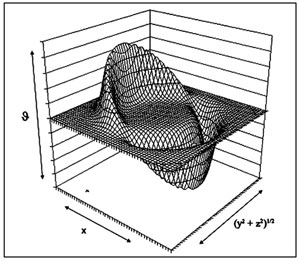
The “York Time” plot to illustrate the warping of space
Anitmatter – Matter Annihilation Propulsion
Pure antimatter-matter annihilation propulsion could offer higher performance than any other propulsion system, but would require even larger amounts of antimatter than antimatter-catalyzed fusion. At the highest possible rate at which CERN facilities would be capable of generating antimatter, it would take about one hundred billion years to generate one gram of antihydrogen. Proposals have been made to build facilities that would be capable of generating and capturing antimatter far more economically than CERN facilities, but would be extremely expensive to develop and still only generate minute quantities of antimatter. Naturally-occurring antimatter could exist in the Van Allen belts of Earth and Jupiter, and if this could be collected with magnetic scoops, it may prove more economically viable than artificially generating antimatter.
Antimatter Ablated Light Sail
Given how expensive it is to create antimatter, we have to work with vanishingly small amounts. One possibility, analyzed by physicist Steve Howe (Hbar Technologies, LLC) is to store anti-hydrogen aboard the spacecraft and let it be released so that it interacts with a small (five-meter) sail impregnated with U-238. The antimatter reacts with the uranium to produce neutrons and various secondary emissions, fission fragments that leave the sail at enormous speeds. The push is essentially a nuclear-stimulated ablation, one that can produce specific power on the order of 2000 kilowatts per kilogram. 30 milligrams of antimatter would enable missions to the outer planets with round trip times on the order of 2-3 years, but an Alpha Centauri mission will still require tens of grams. One possibility: Harvesting naturally occurring antimatter around the outer planets, as investigated by NASA’s Institute for Advanced Concepts, or the Van Allen radiation belts around Earth, which have much less abundant antimatter, but are a lot closer.
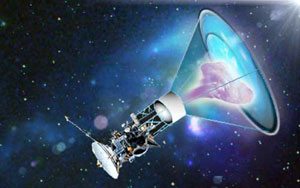
Propulsion Sail Antimatter ablated Image via E Lanana
Antimatter-catalyzed Fusion
No nuclear fusion reactor has yet been built that is capable of generating more energy than what is needed to operate the reactor. One proposed solution to this is to use antimatter-catalyzed fusion. In this concept, a small number of antiprotons are injected into a fusion fuel, which then undergoes annihilation. The large amount of energy released from this reaction generates plasma which then initiates fusion reactions within the rest of the fuel. Theoretically, this could enable fusion more economically than any of the other fusion ignition concepts currently being explored. The major disadvantage to this is that producing antimatter is an extremely expensive and inefficient process.
Bussard Interstellar Ramjet
The biggest problem with propulsion at starflight levels is having to carry the propellant. All that fuel adds up, and the faster you want to go, the more you need, hence the more mass you need to push. Envisioned by Robert Bussard in 1960, a Bussard ramjet gets around the problem by collecting interstellar hydrogen in a vast electromagnetic scoop, using hydrogen fusion to drive the vehicle. Unlike any other interstellar propulsion method, a Bussard ramjet would actually become more efficient the faster it went, allowing travel at a high percentage of the speed of light. Subsequent studies, though, have shown that a ramscoop like this also causes serious drag issues, problems that will have to be addressed if the ramjet is ever to become a viable candidate for our starships. Another major hurdle: The kind of proton fusion Bussard imagined occurs only in the heart of stars. Other kinds of fusion may be more practical for future ramjet designs.
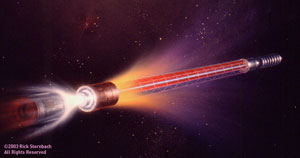
1960 Bussard Ramjet via Rick Sternbach
Chemical Rockets
Chemical rockets dominate much of the aerospace industry due to the high thrust levels that they offer. However, there is a fixed upper limit for the amount of energy that can be stored in the chemical bonds of propellants. This imposes an upper limit on the specific impulse that can be offered. This is the reason why chemical rockets offer small payload mass fractions while requiring large propellant mass fractions. This severely limits the capability of using chemical propulsion for manned interplanetary missions, and makes it completely impractical for interstellar missions.
Electric Propulsion
Electric propulsion systems are not limited by the chemical energy stores in propellants due to their usage of an external power source. This enables them to deliver arbitrarily large amounts of energy to propellant, and as such offer specific impulses far beyond the capabilities of chemical systems. However, the power that they can deliver to propellant is limited by the mass of the onboard power source. An electric propulsion system capable of generating thrust levels comparable to that offered by chemical propulsion would necessitate a prohibitively massive power system. This is the reason why current electric propulsion systems have very low thrust levels, which are orders of magnitude lower than thrust levels offered by chemical rockets. Such systems can only be used on satellites and small deep-space probes.
Electric Solar Wind Sail
Not all space sail concepts use solar photons as their driving force. In Finland, Pekka Janhunen has championed the idea of an electric sail, one that would use long, thin conductive wires that are kept at a positive potential through the use of an onboard electron gun. The electric sail takes advantage of the solar wind, the stream of charged particles that streams constantly from the Sun at speeds ranging from 300 to 800 kilometers per second. The sail’s tethers would be thinner than a human hair but would extend tens of meters into the solar wind flow, with each tether yielding the effective area of a sail roughly a square kilometer in size. Using multiple tethers like these, Janhunen’s team believes speeds of up to 100 kilometers per second are possible, fast enough to reach Pluto in just four years and to push deeply into the nearby interstellar medium in fifteen. The solar wind cannot be used in interstellar space, but a mission to another star propelled by other means could use an electric sail like this do decelerate, braking against the destination star’s own solar wind as it arrives.
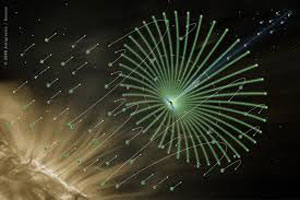
Gravitational Dipole (Robert Forward)
Description pending
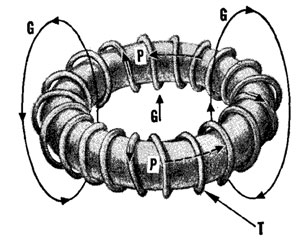
Magnetic Solar Wind Sail (Winglee)
Magnetic sails ride the solar wind – the high speed stream of ions and electrons shed constantly by the sun – via creating an artificial magnetosphere. Made possible by the invention of high-temperature superconductors, magnetic-sails allow space vehicles to maneuver in interplanetary space without expelling propellant. Magnetic sails can also be deployed as interstellar brakes, allowing rockets and laser sails to brake from their high cruising speeds to relatively low speeds, saving fuel. A large unknown is just how dense the interstellar medium is between the Sun and nearby stars, which makes use of magnetic sails for braking potentially risky for early interstellar missions.
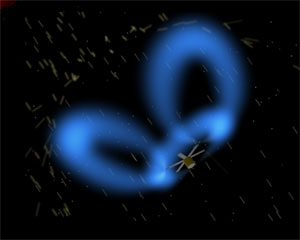
Negative Mass Propulsion
In the 1950s physicist Hermann Bondi suggested the existence of negative mass – mass with an opposite gravitational polarity to regular mass. Normal mass and negative mass repel each other and this feature lead Robert Forward to propose using their mutual repulsion to propel starships – without expending propellant or energy. Negative mass has yet to be observed and there are strong theoretical reasons to suggest it is impossible to create in stable form, but it remains an intriguing possibility.
Nuclear Electric Ion Propulsion
A nuclear electric rocket converts the thermal energy generated by an onboard nuclear reactor into electrical energy, which is then used to drive an electric propulsion system. This could generate thrust levels while also offer a specific impulse greater than that offered by nuclear thermal rockets. A drawback is that the efficiency of nuclear electric systems is limited to about thirty percent due to the Carnot cycle. The rest of the energy is produced in the form of waste heat that must be rejected with radiators. This contributes greatly to the mass of the spacecraft.
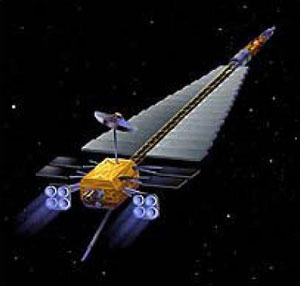
Propulsion Electric Ion Nuclear Powered
Nuclear Fusion Propulsion
A nuclear fusion propulsion system can overcome the limitations of nuclear electric rockets because the plasma exhaust can be converted directly into thrust, eliminating the need for an inefficient conversion between thermal and electric power. Because of this, fusion systems offer much higher specific power ratios than nuclear electric systems, as well as high specific impulses. A major obstacle that has held back the development of fusion propulsion is that no reactor has been built that is capable of generating more energy than what is needed to operate the reactor. A proposed solution to this is antimatter-catalyzed fusion, described above.
Nuclear Pulse Propulsion
A spacecraft that uses nuclear pulse propulsion carries a large number of nuclear explosives, which are then dropped behind the vehicle and detonated. Plasma generated by the explosion transfers momentum to the spacecraft when it impacts against a pusher plate located at the spacecraft’s rear. Such a system would offer very high thrust and specific impulse. Unfortunately, like nuclear thermal propulsion, this would also generate large amount of hazardous radioactive byproducts. The political obstacles to launching a spacecraft carrying a substantial nuclear arsenal may be next to impossible to overcome.
Nuclear Thermal Propulsion
Nuclear thermal propulsion systems increase the enthalpy of a propellant fluid by passing it through a reactor and then expelling it through a nozzle. Like electric propulsion systems, nuclear reactors offer energy densities orders of magnitude beyond what can be stored in chemical propellants. Unfortunately, many nuclear thermal rocket designs generate highly radioactive exhaust products. Political hurdles present an additional obstacle to any system that utilizes nuclear propulsion.
Solar Sail
A solar sail takes advantage of the fact that while photons have no mass, they do impart momentum. Hence a large enough, and thin enough, structure can get a push from sunlight itself. This effect was noted as early as Kepler, who saw how comet tails invariably pointed away from the Sun, and later by engineers studying how communications satellites could be affected by the solar ‘push.’ The Japanese IKAROS sail has demonstrated that solar sails can maneuver in space and take advantage of solar acceleration. The effect is strongest in the inner Solar System and drops sharply as we move outward — a sail at Jupiter’s distance from the Sun receives 25 times less push than one at the Earth’s distance. But a close pass by the Sun could theoretically accelerate a sail to significant speeds for missions to the outer Solar System, or even a flight to Alpha Centauri that would last, in the best case, just over a thousand years.
Beamed Sail Concepts
The momentum of solar photons can be imparted to a solar sail, but it falls off dramatically with distance. By the time we reach roughly the orbit of Jupiter, solar sails have given us about as much of a propulsive kick as they can. However, Robert Forward realized 50 years ago that a powerful laser directed at a large sail could keep it accelerating well past the outer edge of the Solar System. Similar concepts have evolved to use microwave and even particle beams to drive a sail. In some of Forward’s later concepts, speeds of up to 30 percent of the speed of light could be attained, fast enough to allow human missions to the stars when paired with ‘staged sail’ concepts for deceleration. The necessary power technologies and lensing structures to manage this kind of mission are well in our future, but these are engineering challenges that do not involve moving beyond known physics. Some have argued that Forward’s microwave-driven ‘Starwisp’ concept may become a template for the first robotic probes of the nearest stars.
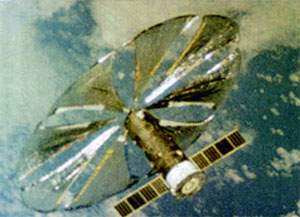
Russian solar sail deployment in orbit, 1993
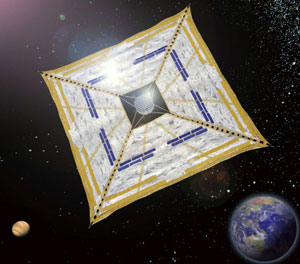
Japanese solar sail on-orbit deployment (JAXA)
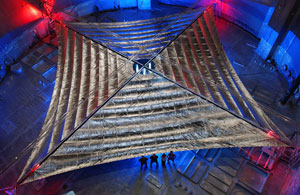
NASA 20-meter solar sail deployment tests on Earth
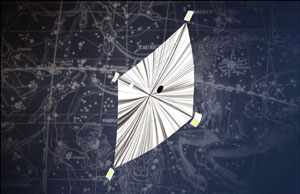
General Sail Concept, Credit A. Szames
Space Drive
In the early 1990s Marc Millis described a spectrum of non-propellant based “space-drives” – propulsion systems that work by manipulating the structure and/or energy of space-time. Warp drive and wormholes are two examples which rely on known solutions to the equations of General Relativity, but other concepts have been proposed that are much more speculative. A short list – Diametric, Bias, Disjunction and Pitch Drives, all of which involve creating a gradient in space-time that is mobile.
Negative Mass propulsion is an example of a Diametric Drive, but more generally in alternative theories of space-time it might work by using a “pressure difference” between a source and a sink in whatever medium is proposed to make up space-time.
A Bias Drive would work by altering the gravitational constant over a region surrounding the vehicle, causing it to “fall through space-time” for as long as the drive operated.
A Disjunction Drive would separate fields from the particles that react to them, creating a permanent imbalance that would propel a vehicle.
Finally, a Pitch Drive would work like a Diametric Drive, but without the source and sink being required to create the gradient. Presently there is no evidence for any such effects.
Alternatively Space-Drives might use space itself as propellant. Marc Millis proposed three different sails that would operate by manipulating the weak energy flows that fill space-time, such as the Cosmic Microwave Background. Such sails would allow energy to flow one way, but not the other, creating an effective pressure difference for propulsion. More recently, Harold White has suggested using the virtual particles of the quantum vacuum – short-lived pairs of matter and antimatter implied by the Heisenberg Uncertainty Principle being applied to “empty space” permeated by quantum fields. Such a Quantum Vacuum Plasma Thruster (QVPT) would use crossed magnetic and electric fields to generate thrust from ejecting the virtual particles in a particular direction. A QVPT would then act like a space “jet-engine”, allowing high performance because it doesn’t need to carry propellant.
All images copyright original holders, included here for instructional purposes only under the Fair Use Doctrine (Section 107 of the Copyright Act).
Content Contributors
- Adam Crowl
- Eric Davis
- Paul Gilster
- Geoff Landis
- Marc Millis
- Kevin Schillo

